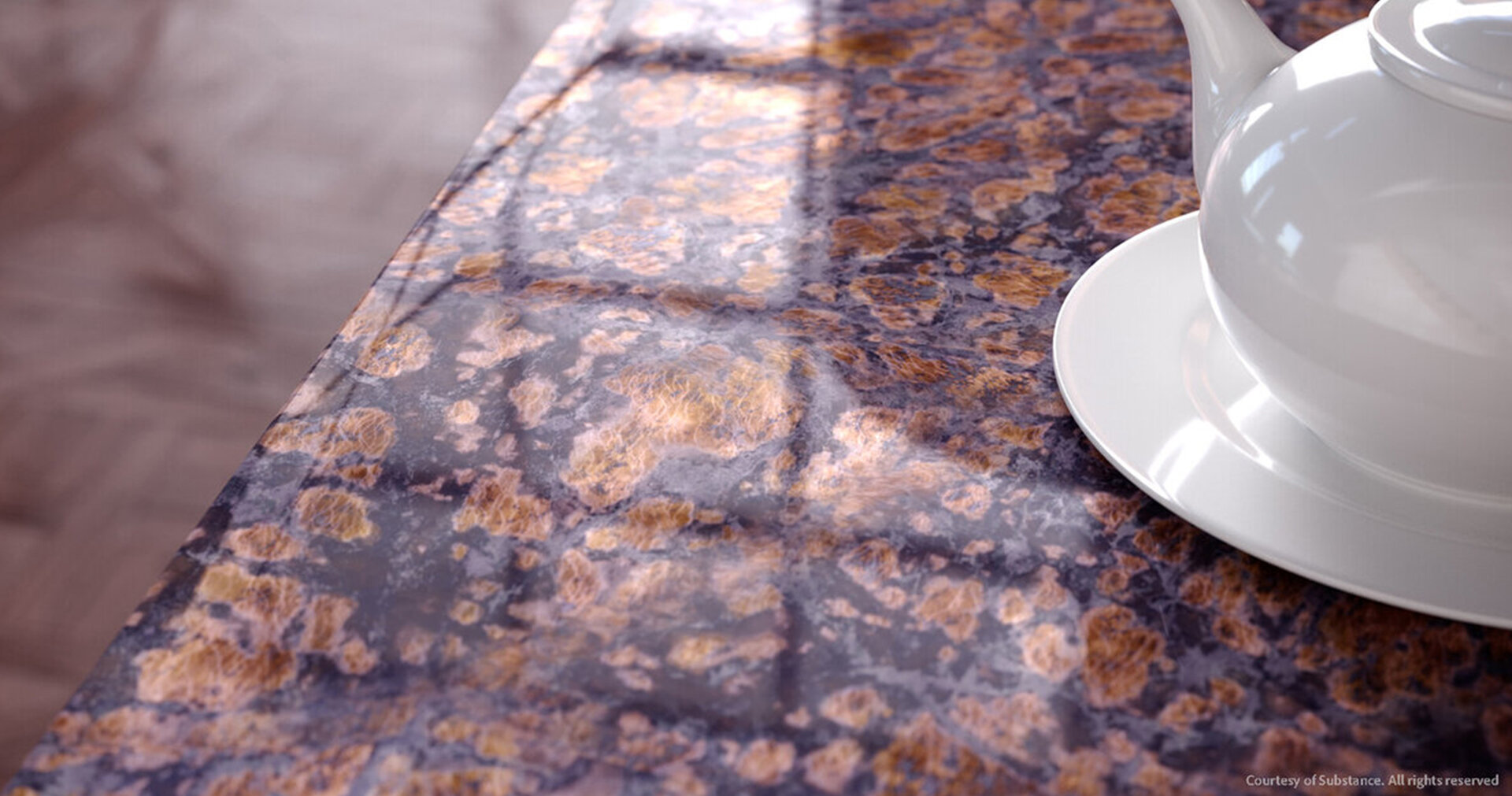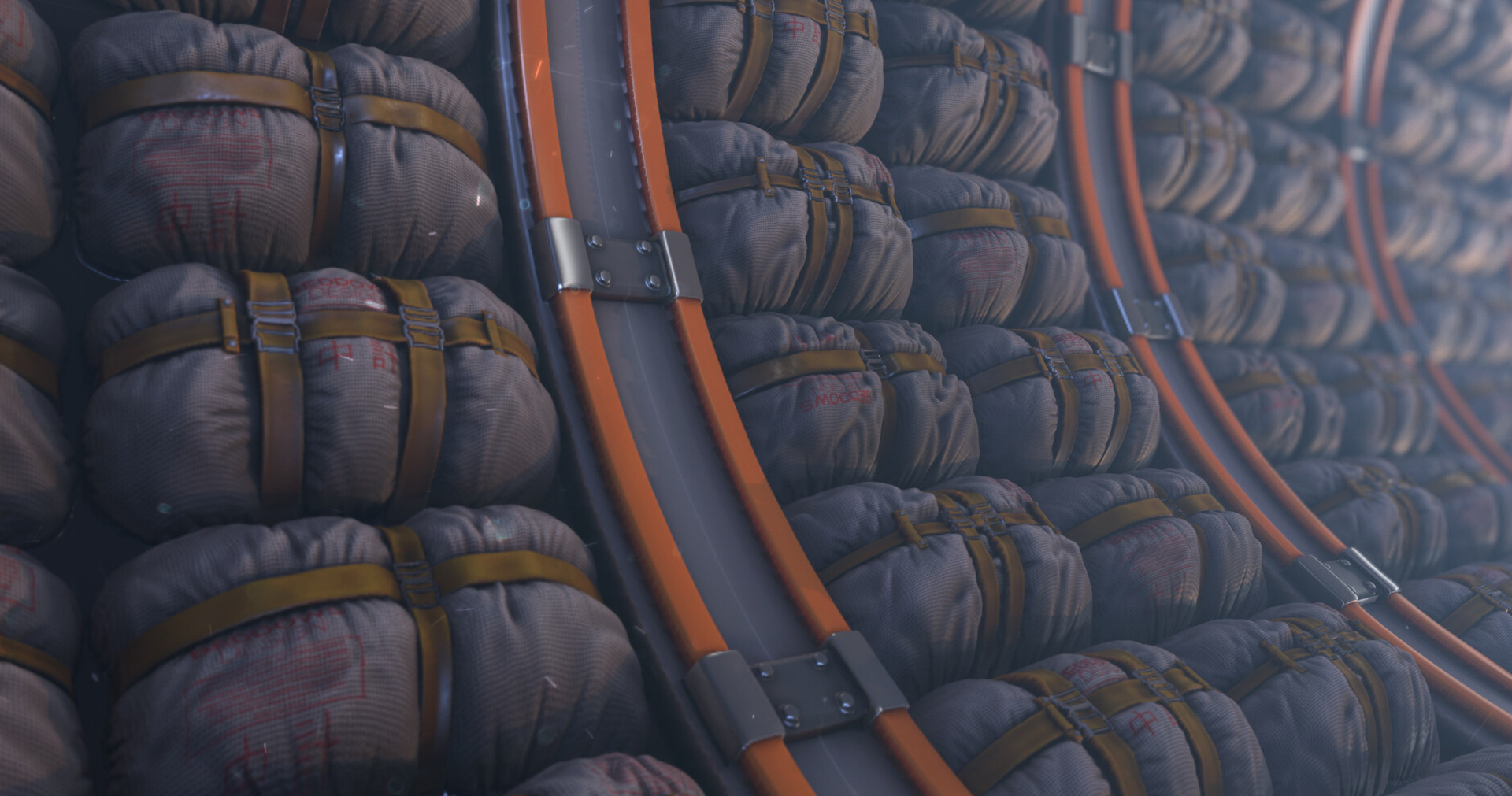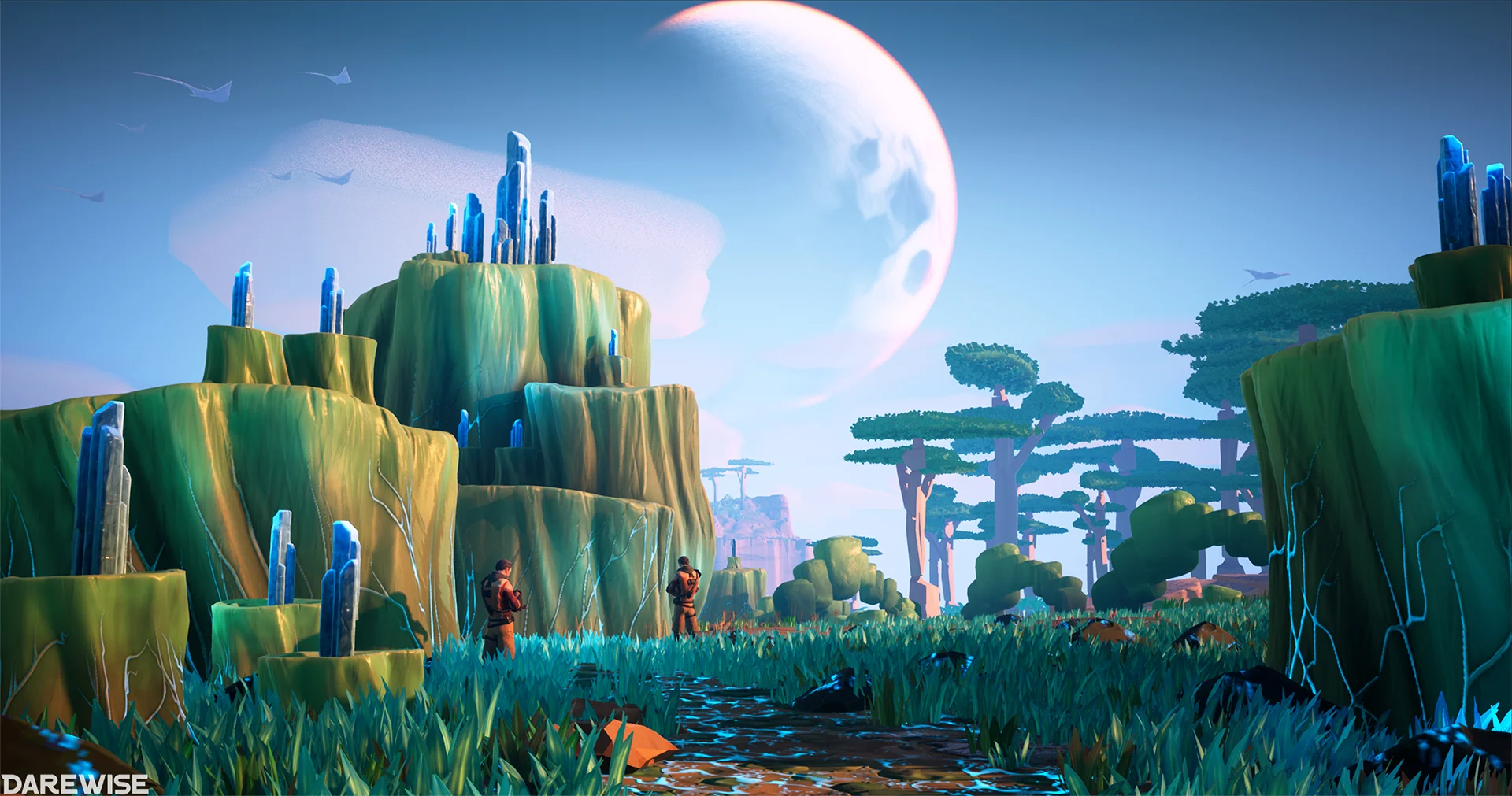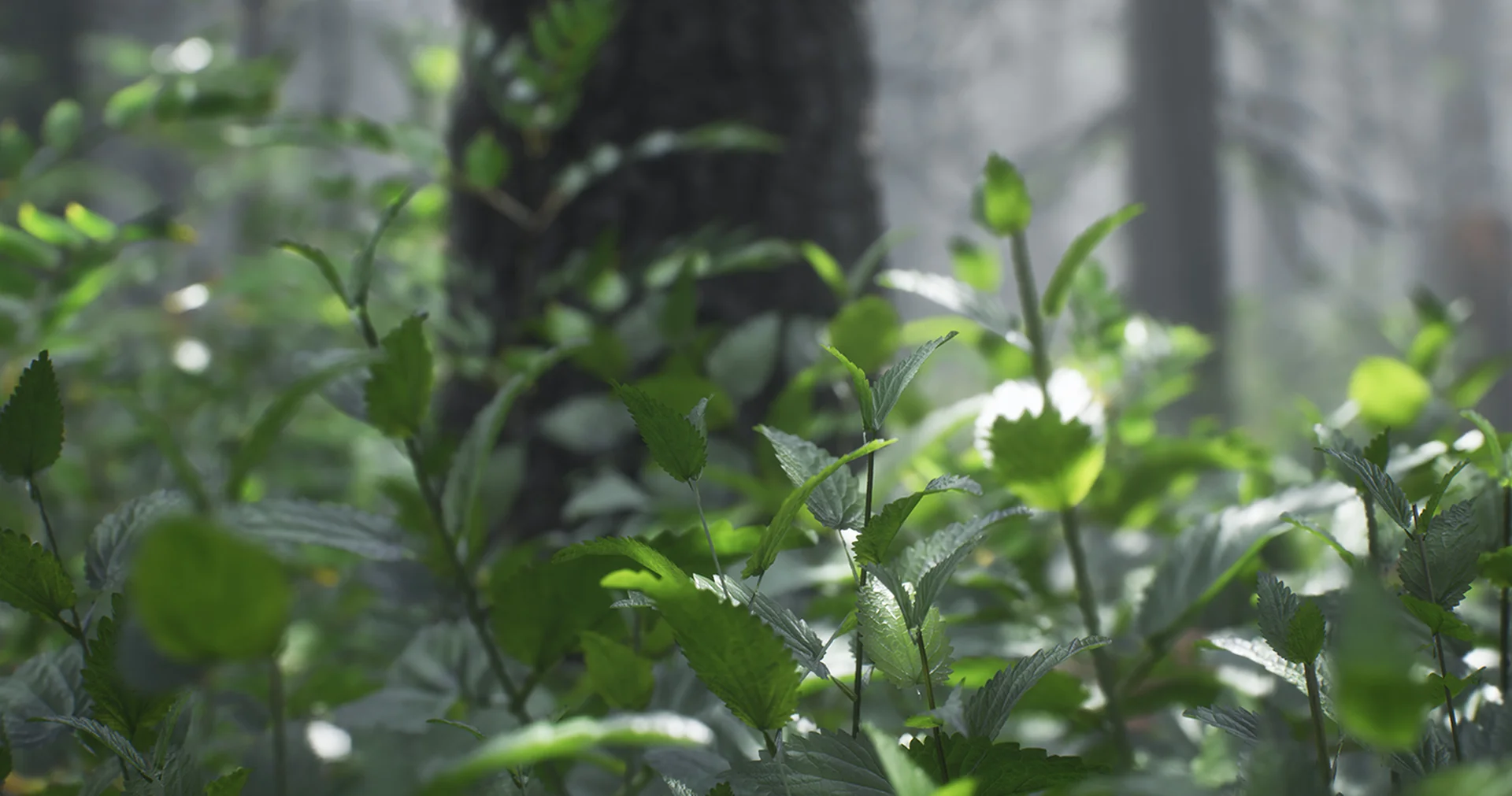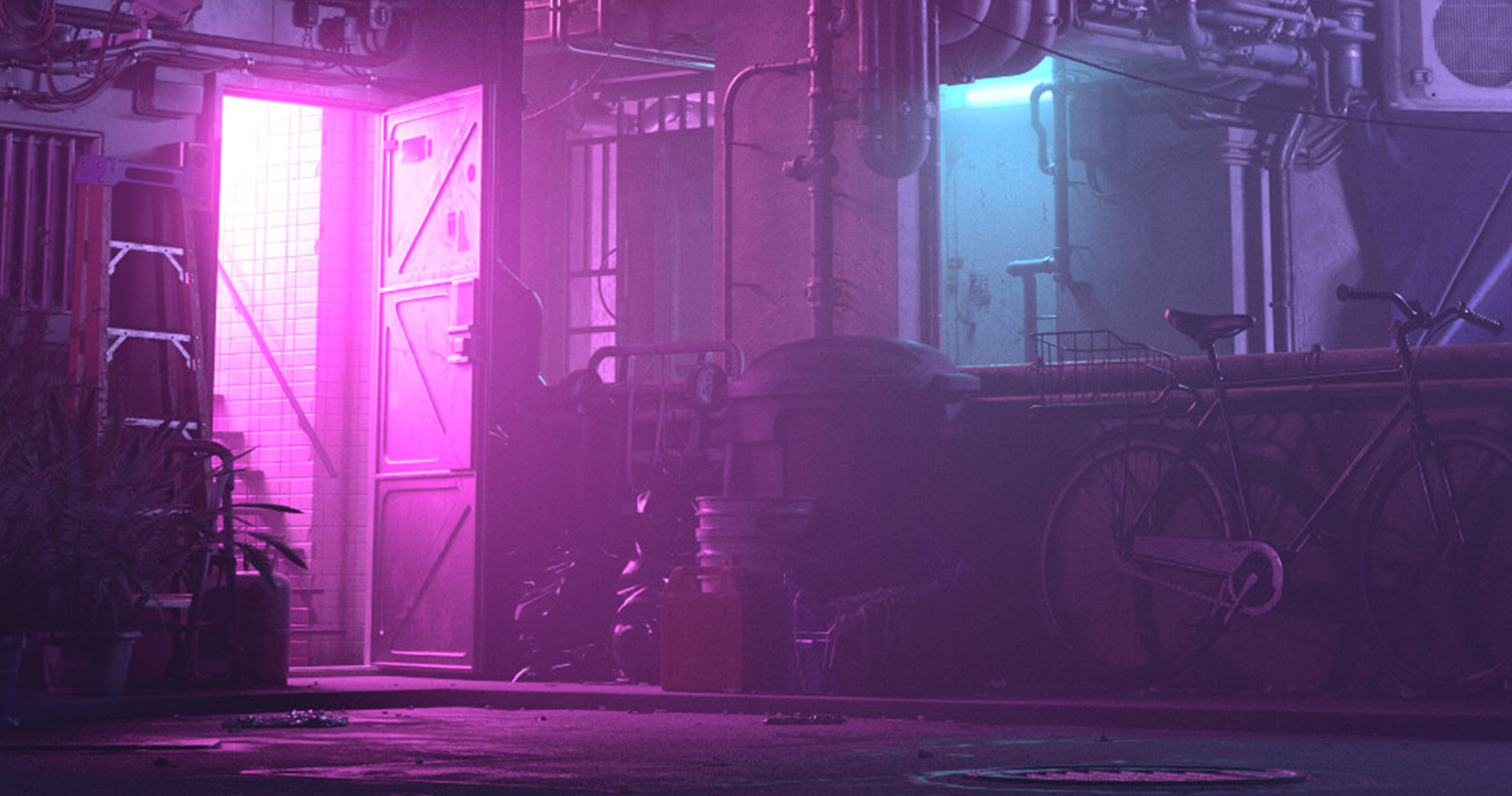Environment Art
What happens when you shine a light on something? In the Twilight Temple, everything comes to life. Maxime Rigole walks us through his environment and details how he created his foliage to react to light, spline based foliage that comes to life, lots of useful blueprint magic and trim sheets to speed up his workflow. Enjoy the adventure and check out the wildlife.
You all know his blog work, but what you may not know is how it started and why. In this article we talk with Timothy Dries about his Environment Artist’s Blog and how he gives back to the community that helped him grow as an Artist. Various topics covered include project scoping, texel density, advice for portfolios and environment art breakdowns.
Read through this Q&A which looks over 13 Particles as a studio, and how they went about recreating an iconic multiplayer map from Counter-Strike: Global Offensive. We look at how they utilised Megascans to create variation throughout the scene, as well as what extras they added to make it their own.
Ever wondered how you can get the most out of your materials? Keegan shows us the various ways he creates his materials and his thought processes while creating them. Join us as we cover the topics such as trim sheets, Marvelous Designer, presentation, as well as Keegan’s tips on becoming a Material Artist.
Here is Vlad Vanzariuc with an in-depth breakdown of his ‘Dark’ environment, inspired by the TV show of the same name. If you want to learn about how to fully utilise third-party assets, create compelling composition and storytelling, and push your environments to the next level, this goldmine of an article is a must-read.
Many join in, but not many finish. David Peryman completed Nodevember 2019 and created all 30 materials. We sit down and discuss with him the impact it had, his approach to each material, how he stay motivated as well as what he personally learnt from the experience.
Enrico Tammekänd is a self taught Material Artist and has made a name for himself. Explore this article where he talks about his path to becoming a Material Artist, his approach to creating materials, presenting them and how he gives back to the industry through livestreams and tutorials.
In this article Romain shares with us how he works as a freelance artist. Read through and learn about how to optimise parameter use in Substance Designer and how to plan ahead. Look into breakdowns of some of his materials and his workflows for implementing feedback.
Dylan Salvalaio walks us through the Stylized Bonfire and Flowing Lava materials he made with Substance Designer. Read through to learn his process all the way from planning to presenting the final render and his tips and tricks on maintaining the stylized look in a procedural package.
The team at Experience Points feel extremely humbled to be able to present what is possibly the biggest article we have published to date.
Turn the lights off, put on your headphones and grab your popcorn. We are about to explore the masterpiece that is… ‘255,255,255 RGB‘.
In this Q&A, Luan Vetoreti talks to us about his experiences working on Star Citizen, how they work on such a large scale and how he had an integral role to play in building the games Material Library and pipeline. With such an extensive role in the development of the game, Luan provides an insight and advice on what other artists can do to better improve their portfolio, providing feedback and how to work in a team.
Stephen Seress-Smith tells us about his latest environment that started out as an art test and then became something bigger. Explore detailed composition and lighting breakdowns, storytelling through props and set-dressing, paintovers, planning techniques and more.
Yurie Kawana brings Lighting, Technical Art and Modelling all together in this dark but beautiful scene. In this breakdown, explore how she went about creating the Shinjuku Station and utilized her knowledge of Tech Art and Lighting to speed up her workflow and visual story telling respectively.
In this extensive breakdown, Jan Trubač talks us through the creation of this astonishingly detailed Substance City. Looking at reference collection, building individual buildings and landmarks, and how to combine all of them together, this article is a mountain of knowledge!
Janrike made the move to Blender and tried it out by creating this wonderful low-poly art piece. Learn about the importance of shape and composition within low-poly art, how Janrike set up lighting and shaders and some tips and tricks for other artists.
Ted Mebratu explores the process of creating this epic cinematic submission for the Unreal Film Jam. Read through as he breaks down specifics such as compositional storytelling, lighting outdoor environments and leveraging video editors for artistic flare.
In this article, Milan De Laet walks us through his process of working from concept and how he created this enormous scene. Learn how he used simple geometry and shapes to focus on the big picture, optimisation techniques, composition studies and much more.
We all love a hand painted environment, and Pedro Damasceno breaks down the scene he created using Unity for us! Dive right in and learn how he achieved the painterly stylized visuals for his scene, his texturing process and lots of small tips and tricks for stylized art.
Artem found an art style that he loves and shares his experience of working on this project with you. Explore how he analysed WoW’s unique style, applied it to his own scene that originally started as a challenge and learn some of the workflow techniques he used to achieve this painterly environment.
Enter the space station that almost seems like a living creature. David Karis shares his entire pipeline from conceptualization to the end product and goes through creating modular kits, trim sheets, hard surface modelling and creating stunning visuals with lighting. Explore the station now.
Learn how Vincent Flohic worked through this project to build a huge castle environment in V-Ray. He explores using references, analysing composition and light, creating textures in Photoshop, matte painting and much more. If you love deep-diving into specific settings and details, then this article is for you.
Enter Cerberus, an environment that proves a great example for how to keep the end goal constantly in mind. Join us once again as Alex Beddows shares some great tips and tricks for creating stunning visuals and hacking your way through an environment within Unreal Engine 4. Learn about creating animated raindrop shaders, localised fog, tonemappers and more.
Explore the process of material creation in UE4 with Lincoln Hughes. In this article he walks us through how he plans for, optimises, and creates his robust master materials, as well as naming useful nodes to know about and how material functions are must-haves.
Phil Stoltz has a talent for working in both stylised and realistic art styles. Explore this breakdown to learn how he built his Hell Scene, the choices he made on composition and colour and why he works on stylised and realistic scenes. He also shares some great advice on presenting your portfolio and advice for landing your first job.
Sander Agelink walks us through how he created this modular building based on the Columbus Tower. Dive in to learn how he used cubemaps for the windows similar to Spiderman, procedural window blinders, world aligned dirt with trim sheets and much more!
Bohdan Bilous tells us about how he created his impressive European Forest Environment in Unity. In this article he covers his process for creating game-ready vegetation, as well as his material setups and how he creates effective outdoor lighting.
Learn how Vuk Banovic went about creating this modular masterpiece. In this article he explores planning, material setup and the process of building a modular kit from one material, as well as the challenges of the workflow.
Markus explains his experience with The Mentorship Coalition and how his mentor helped him create this environment in only 5 weeks. Learn how he used only 2 trim sheets, vertex blending and decals to efficiently create everything.
Sourav Kumar walks us through how he created his submission for the Legend of King Arthur Artstation Challenge. In this article he covers topics such as his process for blocking out a powerful composition, creating fantastic trim sheets and sculpting unique props.
This scene was one of 2019’s highlights and hits all of the nostalgia feels. In this beautiful breakdown, Derk Elshof covers a variety of topics ranging from asset creation, storytelling with sound, composition, colour palettes, interior design tricks and much more. Don’t wait for your birthday to read this piece!
Celine Bader worked on some of the recent Substance Source drops and gives us an insight on what it’s like creating content for their Source library, the rules they have to follow, ensuring materials are kept consistent and how Substance builds the quick ‘presets’ available for artists.
CGMA Student Frank van Halteren breakdown his King Arthur scene and explains some of the techniques he used to craft the Grandoise King’s chamber. Learn how he used trim sheets, created materials and in-cooperated props that added lots of subtle storytelling.
Enter the Bowling Alley for this masterclass breakdown by Adam Tinning as he explains and showcases many of the industry standard workflows such as material layering, vertex blending, decals as well as an absolute gem of a workflow setup for blocking out scenes.
Clinton does more work than time allows. Owner of Dekogon, Principal Artist at Midwinter and also a mentor at CGMA, he pushes the boundaries of what is possible. In this Q&A we discuss how Dekogon operates, time management between all of his projects, how to avoid burnout, common mistakes he sees in Junior artists as well as advice on how to better improve your portfolio.
Vincent has worked on some of the largest titles in the industry, from Assassin’s Creed Black Flag to Assassin’s Creed Odyssey, and now Gods & Monsters. In this Q&A we discuss what it’s like working on such large projects, the role of material artists in a team, his responsibilities as Lead, common mistakes he sees in Junior artists as well as advice on how to better improve your portfolio.
Tim Simpson, also known as Polygon Acadmey, is well known in the industry for his impressive lighting work and art tutorials. In this special Q&A you can learn about how he got where he is today, the workflow he uses for his projects, tips he has for other artists in the games industry and mistakes he sees far too often.
We sit down and pick the mind of Romain Lambert, an artist currently working on the Borderlands franchise. Get a first hand view of his experiences, how he adapted his artistic style to match the requirements of the studio as well as an extensive Q&A on landing a job in the industry and common mistakes he sees in portfolios.
Nicolas Mendoza serves this massive breakdown of Cathedral of the Dead, the environment he made during his time at CGMA. Read through and explore how he collects reference, create assets, and assembles his scene within Unreal Engine 4. If you are interested in learning more about modularity and the uses of trim-sheets, then this is a must read.
Christopher Evans has been busy mixing materials and discusses the differences between Substance Designer and Quixel Mixer. In this article he walks us through his approach to creating materials, the pros and cons of both packages and why you should not limit yourself to one tool.
Explore the breakdown of Finn’s Snow & Ice environment as he talks about how he focused on the big picture over smaller assets, his implementation of RTX, advice on realtime environments and also discusses the differences between CryEngine and Unreal Engine 4.
Forgotten Lands demonstrates a masterful execution of artistic skills, both fundamental and digital. Alec Tucker walks us through his process focusing heavily on story, atmosphere, composition and everything in-between. With paint over analysis, this is a gold mine of knowledge.
Join Alec Tucker in this beautiful breakdown on how he recreated the iconic island from Cast Away. He goes through his approach layering assets realistically, working with Megascans, compositional and colour analysis as well as how he created the iconic best friend ever, Wilson
Explore this massive breakdown to learn how Andrew Lund III created this cozy winter environment. Andrew sketched his own concept for this scene and created a variety of unique shaders for this scene. A Cold Winter's Night covers many topics such as implementing feedback and staying motivated. If you’re looking to blend assets with the terrain seamlessly, read this.
Eric has been hard at work inside Quixel Mixer and gives us an insight on how he creates all of his unique materials. In this breakdown, get a look into his workflow techniques on how to approach material creation, a full breakdown of his Planet material as well as a very unique lighting approach using Marmoset Toolbag 3.
The Old Masters spent many hours painting in their studios. Tyler Thomas has recreated the artist’s studio and talks about his workflow techniques from blockout and lighting, to material creation and prop creation. Tyler Thomas was also kind enough to put my oil painting of my dog in the scene!
Lukas Stratnmann did a beautiful tribute for the 100th Anniversary of World War I. This is a story about the war ending and the soldiers, all but one, having left and gone home. Dive deep into this breakdown to read how Lukas puts attention to detail and crafts over 50 unique assets to pay tribute.
Jacob Claussen did a beautiful hand painted scene for the King Arthur challenge and talks to us about his process of achieving such a style, the composition of his scene as well as some colour theory and book recommendations.
Elias Tsirides from Splash Damage talks to us about his submission for the Artstation Challenge and how he crafted the single shot cinematic. He also details his unique process of sculpting the geode, as well as his approach on trim sheets, foliage and artistic fundamentals.
When you think Substance Designer, no doubt the name Javier Perez pops up. Javier gives us a short but sweet insight into some of his work from the Signature Series and his contribution to Artstation Learning. Read now to see how he works with Substance Designer.
Inspired by God of War, Luca used it as an opportunity to live stream his process on Twitch, but fear not, he has you covered with this breakdown in case you missed it. Read how he created layered materials, material functions, sculpted the iconic Nordic pillars, texturing large assets and lots more.
In this extensive breakdown, Lead Environment Artist at Creative Assembly, Simon Pennington, walks us step by step through how he created this Star Wars inspired ball. If you are interested in Substance Designer, do not miss out on this one!
Robert Schröer traveled to Germany to collect references for his first ever project using UE4. Learn how he procedurally generated cliffs using Houdini, set up layered materials and created the foliage. This is a great read and full of advice.
The Void demonstrates a masterful execution of artistic skills. Only his 2nd time using UE4, Jakob Keudel assembled a team to create this stunning environment inspired by Stalenhag. Dive deep into this breakdown to learn how it all came to life.
In only 10 days, Andrew Kelly crafted this beautiful sci-fi facility. Learn how he used a single trim sheet to create this entire scene. Sometimes the simplest approach is the most efficient.
Mary-Sue Challinor created the appliance that is required to cook her favorite dish; lasagna! This breakdown pinpoints her workflow techniques from start to finish and outlines some important steps that all artists should follow. Read now to see how the old rusty stove was bought to life.
In this exclusive format, Alex Beddows has created a video tutorial accompanied by a full article breakdown. Whichever your preferred method of learning is, we’ve got you covered. Dive in to see how Alex used Marvelous Designer to speed up his workflow process and created this Paul Pepera inspired material.
Stylized specialist Alessandra Astrino, was awarded 3rd place in the Artstation Challenge. We get an exclusive look at how she created her props, more specifically the Green Axe. Read now to see how she hand crafts stylized assets.
Out of Gas is full of frozen gems and artistic knowledge. Read how Alex Beddows created this beautiful scene, from the snow shader to transitioning to Blender.
Tuur gives us a masterclass breakdown of his Baroque Bedroom and explains how he built the story around the 4 Seasons and Greek mythology. Learn how he crafted the ornate patterns, built the materials and subtlety incorporated Hades into his scene.
Get ready to enter the Slaughterhouse and explore this extensive breakdown by Jay Cummings. Jay talks about photogrammetry, lighting, materials, foliage, composition and more.
Winner of the Artstation Challenge, Lea Kronenberger, gives an incredible breakdown for her submission. Lea breaks down her workflow techniques such as how she uses trim sheets and flipbooks for her assets as well as lighting and planning.
Kem Yaralioglu gives us an extensive breakdown on various topics of Environment Art ranging from materials and lighting to procedural workflows and terrain pipelines.
The iconic walk to Riften in Skyrim is what inspired Jonathan Hemmens to build this incredible environment. Read how he uses storytelling to fuel his creativity and bring this cold scene to life.
Dive in to see how Tina Renksi uses colour and lighting to build mood and atmosphere in his scene. With only 10 months of 3D, this is a an excellent use of colour theory.
Felipe explains how his passion for coffee inspired the creation of this scene. Learn how he worked on the materials, models and lighting for this scene.
Andreas Lohse explains to us how he worked from concept to create the amazing environment, Hideout. Learn how he made it her own and created all of the props.
Explore the port of Sea Station and learn how Kenji Shimomura captured the living breathing atmosphere of this mini town floating on sea.
Ever wondered how the human race would browse Instagram or Twitter in space? Well Gabriel has created a stunning environment on what the near or distant future may look like.
Get ready to pick up your camera and start taking photos because Alex Patel gives us a full breakdown of how he uses photogrammetry to create hyperrealistic assets that are optimized for games
A true lighting masterclass. From cinema and film to video games, Kemal has experienced it all and in this extensive breakdown he details how he got into both industries, the skills he learned and how he built his most recent project, The Alley.
The Cyberpunk era of our lives is not far and Stan has given us a great example of what it may be like! Learn how he uses color, light and shadow to create atmosphere, as well as learn how he uses displacement to turn simple shapes into complex structures.
Adam Dudley talked about how he builds his beautiful materials using Substance Designer for AAA games and shares some workflow tips for building materials.
black cat adventures - importance of color and light
Peter Tran from Ubisoft has gone on many adventures with his Black Cat. Learn the importance of lighting for environments, common mistakes to avoid and how to use the rules of cinematography and photography for lighting.































